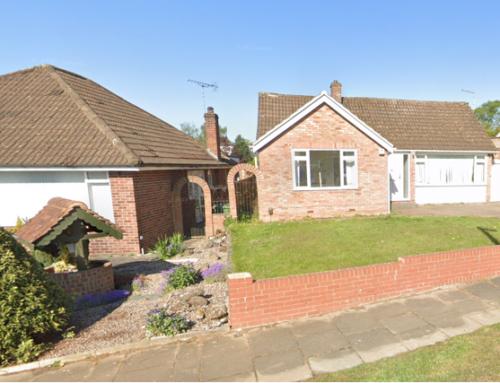In the realm of property development, the concept of Right to Light law has gained heightened prominence as cityscapes continue to transform. As developers strive to enhance their projects, understanding the implications of light rights can make or break a development's success. A Right to Light survey acts as a vital tool that analyzes existing light conditions and potential infringements, ensuring that both developers and neighboring properties are protected. It is important for anyone involved in urban planning and development to comprehend the value of these assessments and when it might be required to enlist the help of a certified expert.
Navigating the complexities of Right to Light can be overwhelming, especially as legal frameworks and local rules vary significantly. The background and jurisprudence of Right to Light in the UK provide a basic understanding of why these surveys are crucial. They not only help in avoiding disputes but also play a critical role in securing permits for development. As development applications become more and more scrutinized, being aware of when to commission a Right to Light survey could likely save constructors from costly delays, legal challenges, and strained relationships with neighboring properties.
Comprehending Right to Light
The right to light is a legal principle that affords property owners the ability to obtain natural light into their buildings. This right arises from established law and can be claimed if a property has received light through designated apertures, such as windows, for a continuous period, often two decades. The value of this juridical right cannot be overlooked, as it profoundly impacts both property development and neighboring properties.
As city areas experience increased development pressure, grasping right to light becomes progressively vital for developers. Gaining planning permission often relies on whether a proposed development will block light to adjacent properties. Navigating these legal waters requires understanding of your rights, the rights of others, and the possible implications for development projects.
Neglecting to take into account right to light during the planning stages can lead to substantial delays, legal disputes, and potentially the halting of development. It is essential for developers to engage in right to light assessments early in the planning process to pinpoint potential issues and lessen risks, thus ensuring a more streamlined progression toward completion of their projects.
Development and Legal Implications
Grasping the planning implications surrounding Right to Light is vital for real estate developers. Neglect to take into account these factors can result in substantial delays and additional expenses, notably if a developer's plans violate a neighbor's right to light. Planning authorities often require a thorough analysis of Right to Light analysis to guarantee compliance with local laws and community standards. Right To Light Addington guarantees that new projects or extensions do not obstruct the natural light that neighboring properties enjoy, which is both a moral and legal requirement in many jurisdictions.
Legal ramifications can arise if a builder proceeds without adequate assessments. Adjacent property owners may object to proposed projects on the grounds of Right to Light, potentially leading to lengthy disputes or legal action. A Right to Light survey can serve not only as a method of necessary caution but as a protective measure against possible litigation. Developers should be cognizant that losing a Right to Light case could result in costly modifications to their plans or, in the most severe scenario, a halt to construction.
In addition, managing the complexities of Right to Light versus planning approval is important. While approval may be granted, it does not automatically guarantee that light rights will be honored. Understanding these distinctions and making sure that both elements are addressed comprehensively can save developers from unexpected pitfalls down the road. Hiring specialized advisors for light rights evaluations can simplify this procedure, ensuring that all legal obligations are met and facilitating easier project execution.
This Right to Light Survey Process & Recommended Approaches

A right to light assessment procedure starts with an thorough assessment regarding the site as well as its surroundings. An experienced assessor can evaluate the existing illumination as well as the potential impact of proposed construction. This entails examining the alignment for the building, location of neighboring buildings, as well as environmental light conditions. Gathering data via on-site inspections along with using sophisticated technologies provides accurate readings, which are essential in determining compliance to statutory light regulations.
Following the initial evaluation, surveyors create detailed documentation, including natural light and sunlight analysis. These documents outline the way these developments can affect light availability for neighboring properties. Recommended methods advise adhering to Building Research Establishment (BRE) standards, as they provide an extensive framework to assessing illumination. Construction managers ought to work with right to light experts at the beginning of the design phase in order to detect any potential issues as well as address those prior to they becoming legal conflicts.
Clear communication among adjacent property owners is crucial during the survey process. Informing neighbors about the proposed project and its implications on their illumination rights can help to mitigate opposition while also encourage cooperation. Addressing issues proactively can pave the way for easier planning approvals and reduce the risk of costly legal challenges down the line. Engaging a professional for light rights evaluations not just facilitates adherence but also enhances the entire success of the project.
